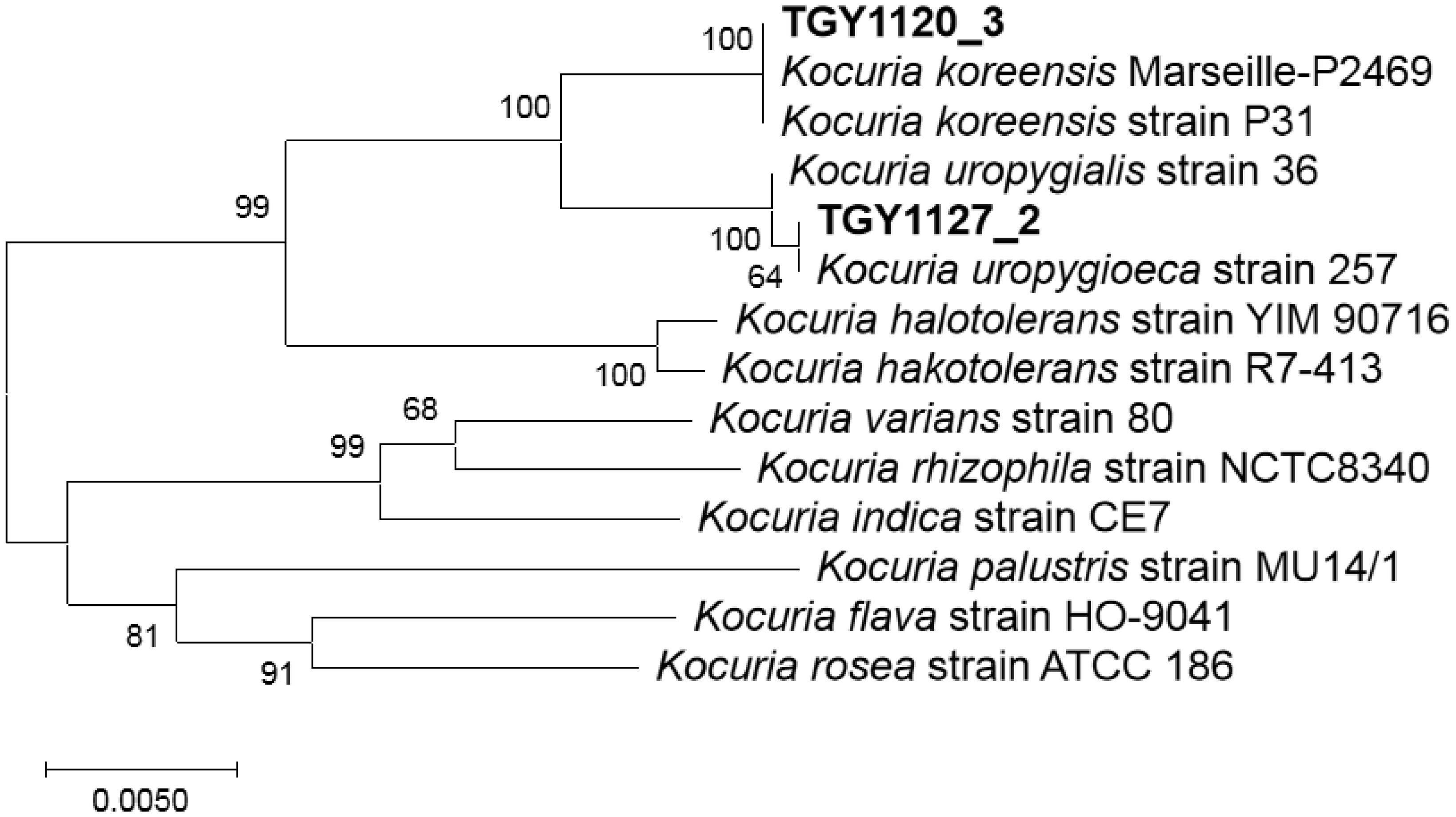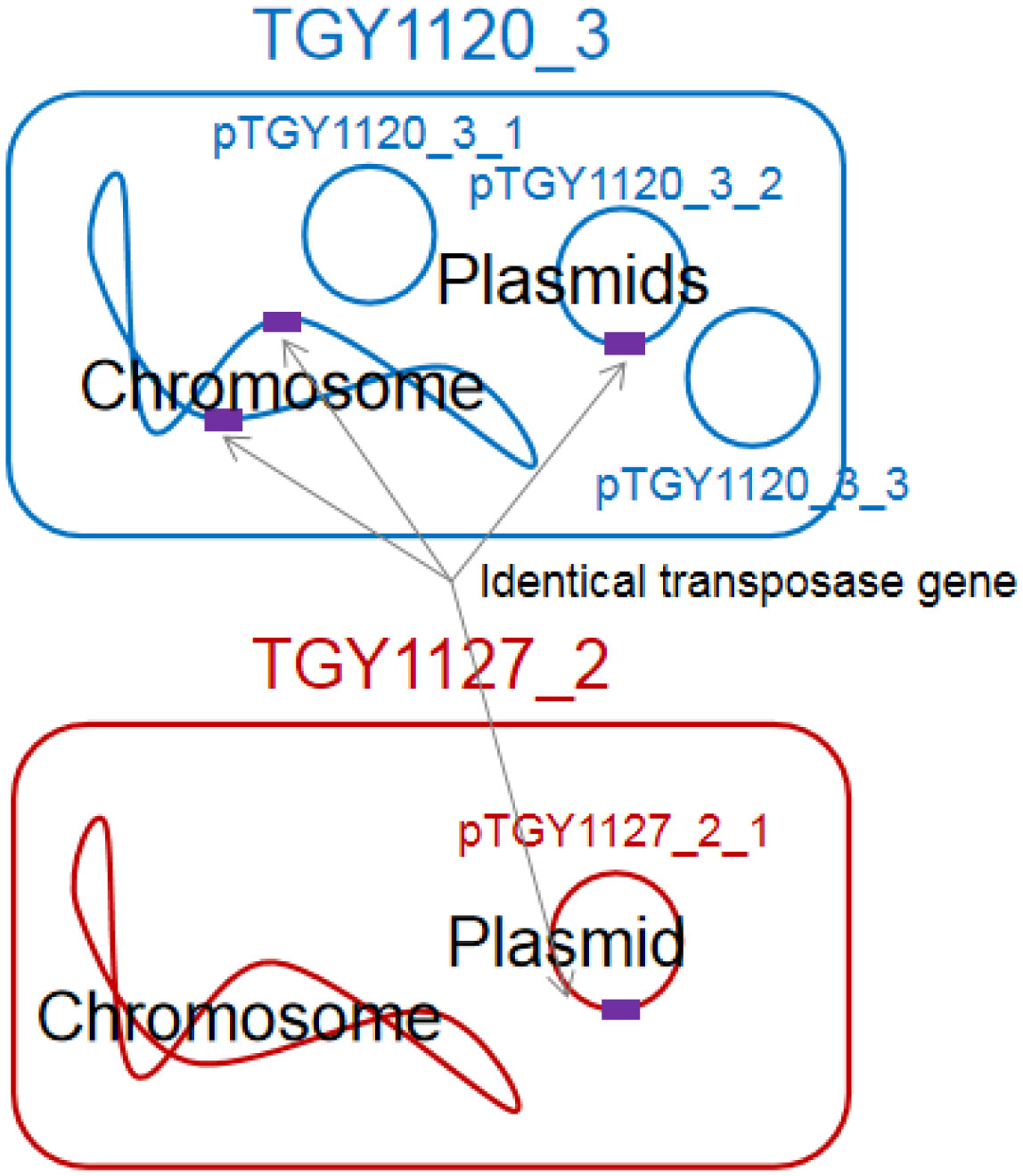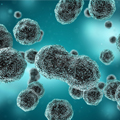1.
Introduction
Sake is a traditional Japanese alcoholic beverage. During sake brewing, the filamentous fungus Aspergillus oryzae converts rice starch into sugars; then, the yeast Saccharomyces cerevisiae converts the sugars into ethanol [1]. Sake brewing is not performed under completely sterile conditions. Therefore, numerous microorganisms are present at the beginning of the production process. As this process progresses, it gradually becomes suitable for yeast growth; eventually, no microorganisms but yeast persist due to their production of high ethanol concentrations (approximately 20%).
In the past, sake was produced using different S. cerevisiae strains that inhabited each sake brewery, known as kuratsuki yeast [2],[3]. The sake yeast unique to each sake brewery thus influenced production. Currently, many sake breweries produce sake using some selected sake yeasts (Kyokai yeasts) that are managed by the Brewing Society of Japan (Jozo-kyokai) [3],[4]. However, these yeasts were once established in specific sake breweries [3].
A. oryzae and S. cerevisiae are essential for sake production. As additional microorganisms are not added during the production process, any bacterial DNA detected in sake products must come from the bacteria entered during the production process [5],[6]. Highly ethanol-tolerant lactic acid bacteria can spoil sake [7]. This spoilage is prevented using pasteurization, which has been performed since the 16th century in Japan, before Louis Pasteur's invention.
Comparative studies of bacterial DNA sequences in sake have detected diverse types of bacterial DNA, indicating that various bacteria grew during the sake production process [5],[8]–[12]. Although bacterial DNA is detected in sake products, most bacteria die due to high ethanol concentrations. Thus, no bacteria were isolated from sake products. Therefore, we isolated bacteria from samples of the first mixture (Hatsuzoe) of koji (steamed rice covered with A. oryzae) and moto (fermentation starter including S. cerevisiae) and then identified the isolates. We obtained 46 bacterial isolates from six different Hatsuzoe samples in Brewery Toyama 1 [12].
In our previous study, DNA of the genus Kocuria was detected only in cloudy sake and sake-kasu (sake lees) of Brewery Toyama 1 [12], strongly suggesting that Kocuria may be specific to this sake brewery. In addition, Kocuria DNA was not detected in clear sake from Brewery Toyama 1 [12], indicating that Kocuria cells may be difficult to lyse during sake production. This is consistent with the fact that ethanol does not disrupt Kocuria rhizophila cells [13].
In this study, genomic DNA of the Kocuria isolates from Hatsuzoe of the sake brewery were sequenced and compared.
2.
Methods
2.1. Culturing, DNA isolation, and PCR
YPD (20 g/L tryptone, 10 g/L yeast extract, 2.0% glucose) medium and YPD agar plate were used for culturing each isolate. Each isolate was incubated overnight at 37 °C or for 2 days at 30 °C. DNA of each isolate was extracted from the culture (1 mL) and purified using NucleoSpin Tissue (Macherey-Nagel, Düren, Germany). The V3–V4 region of the 16S rRNA gene from each DNA were amplified using the PCR primers, 5′-ATGTGTATAAGAGACAGCCTACGGGNGGCWGCAG-3′ and 5′-TGTATAAGAGACAGGACTACHVGGGTATCTAATCC-3′, which were designed by modification of method of Illumina, San Diego, USA. The PCR products were sequenced using the primer 5′-TGTATAAGAGACAGGACTAC-3′.
2.2. Phylogenetic analysis
A neighbor-joining tree was constructed with 1000 bootstrap replicates using MEGA X [14]. The evolutionary distances were computed using the Maximum Composite Likelihood method [15] and presented in units of the number of base substitutions per site. This analysis involved 14 nucleotide sequences of 16S rRNA gene. All positions containing gaps and missing data were eliminated (complete deletion option). In total, the final 16S rRNA gene dataset revealed 1407 positions.
2.3. Genome sequencing
The genomes of isolates TGY1120_3 and TGY1127_2 were determined using both Nanopore (GridION X5; Oxford, UK) and Illumina (MiSeq; San Diego, CA, USA) DNA sequencers. The hybrid assembly of the two sequence data was performed using Unicycler version 0.4.7 [16] or MaSuRCA version 3.3.3 [17]. Circulation analysis was performed using Circlator [18]. Illumina short reads mapping was performed using BWA version 0.7.17 [19], and then error correction was performed using Pilon version 1.23 [20].
3.
Results and discussion
3.1. Isolation of Kocuria living in a sake brewery
In our previous paper [12], we found 46 bacterial isolates from 6 different Hatsuzoe samples from Brewery Toyama 1. Based on the partial 16S rRNA gene sequences, 23, 12, 6, 2, 2, and 1 isolates from 6, 4, 3, 1, 1, and 1 Hatsuzoe samples had similar sequences to the genera Kocuria, Staphylococcus, Bacillus, Leifsonia, Microbacterium, and Enterococcus, respectively [12]. Thus, these genera belong to gram-positive bacteria.
Kocuria isolates were obtained from all 6 Hatsuzoe samples [12]. In addition, DNA from the genus Kocuria was detected in cloudy sake and sake-kasu of the same sake brewery (Brewery Toyama 1), but was not detected in the other breweries [12]. Thus, these Kocuria isolates probably inhabit the sake brewery.
In the traditional sake brewing, non-spoilage lactic acid bacteria that inhabit a sake brewery have been used for preventing growth of other bacteria with lactic acid [9]. Kocuria is a gram-positive coccus, which belongs to actinomycetes [21]. To our knowledge, this is the first report on the isolation of bacteria other than lactic acid bacteria living in a sake brewery.
3.2. Detection of different types of Kocuria
Comparison of the partial 16S rRNA gene sequences revealed two groups of Kocuria isolates (Supplementary File 1). Among 23 Kocuria isolates, the sequences of 5 isolates were identical to the sequence of K. koreensis, and those of 18 isolates were identical to that of K. uropygioeca. The species of K. koreensis and K. uropygioeca are evolutionarily closely related [22],[23]. Here, we termed the 5 and 18 isolates as Kk and Ku types, respectively (Table 1). In Hatsuzoe samples 3, 4, and 6, both types were detected (Table 1), indicating that different types of Kocuria lived in the Hatsuzoe.
Kocuria is a microorganism detected in fermented foods and beverages [24]. These isolates can grow in not only the general bacterial media such as Luria-Bertani and Tryptone, Glucose, and Yeast extract (TGY), but also in marine broth used for culturing marine bacteria [12]. This suggests that these isolates can grow in various environments, including that of the sake production process.
3.3. Kocuria isolates differ at the species level with different genomic characters
We selected randomly two isolates from each type and performed whole-genome DNA sequencing of isolate TGY1120_3 belonging to Kk type and isolate TGY1127_2 belonging to Ku type. Isolate TGY1120_3 had one chromosome (Accession number, AP022830) and three plasmids, pTGY1120_3_1 (AP022831), pTGY1120_3_2 (AP022832), and pTGY1120_3_3 (AP022833); and isolate TGY1127_2 had one chromosome (AP022834) and one plasmid, pTGY1127_2_1 (AP022835) (Table 2). The GC content of each plasmid was lower than that of the host chromosome (Table 2). This bias of GC content is commonly observed between bacterial plasmids and their host chromosomes [25],[26]. Based on gene annotation, isolate TGY1120_3 had 2556 protein-coding genes (including 1036 hypothetical proteins), 48 tRNA-coding genes, and 9 rRNA-coding genes (Table S1). Isolate TGY1127_2 had 2648 protein-coding genes (including 1085 hypothetical proteins), 50 tRNA-coding genes, and 9 rRNA-coding genes (Table S2).
Based on the phylogenetic tree of complete 16S rRNA gene sequences, isolate TGY1120_3 belongs to K. koreensis and isolate TGY1127_2 belongs to K. uropygioeca, which is consistent with the partial 16S rRNA gene sequence comparison (Figure 1). Thus, these isolates differ at the species level.
Not only 16S rRNA gene but also other genomic information differs between TGY1120_3 and TGY1127_2. The genomic information showed that TGY1120_3 and TGY1127_2 have 4 (TGY1120_3_00327, TGY1120_3_02298, TGY1120_3_02384, and TGY1120_3_02479, see Table S1) and 7 (TGY1127_2_00485, TGY1127_2_01264, TGY1127_2_01480, TGY1127_2_01984, TGY1127_2_02447, TGY1127_2_02542, and TGY1127_2_02644, see Table S2) alcohol dehydrogenase homologs. Alcohol dehydrogenase is reported to be associated with ethanol resistance [27],[28]. In addition, although TGY1127_2 has urease complex homologs (gene cluster TGY1127_2_01020 to TGY1127_2_01028, see Table S2), TGY1120_3 lacks them. Urease is reported to be associated with acid resistance [29]–[32]. It strongly suggests that TGY1127_2 has stronger acid and alcohol resistance than TGY1120_3.
3.4. Distribution of identical transposase genes in Kocuria isolates
Isolate TGY1120_3 had two ISL3 family transposase ISAar30 coding genes (TGY1120_3_00129 and TGY1120_3_00291, see Table S1) on different loci of the chromosome and one (TGY1120_3_02579, see Table S1) on the plasmid pTGY1120_3_2 (Figure 2). The DNA length was 1308 nt, encoding 435 amino acids. These three DNA sequences were identical, strongly suggesting that these regions were recently transferred between the chromosome and plasmid of Kocuria isolate TGY1120_3. The GC content of the ISL3 family transposase ISAar30 cording gene is 69.3%, which is higher than those of the chromosome (64.8%) and the plasmid pTGY1120_3_2 (58.7%) (Table 2). Bacteria have the nucleoid-associated proteins that bind horizontally transferred DNA regions with low GC content rather than the remaining DNA and inhibit expression from those regions [33],[34]. However, to our knowledge, there are no reports of proteins that bind to regions with high GC content and inhibit gene expression. It suggests that this gene may be transferred from bacteria with high GC (approximately 70%) content genome and be active in isolate TGY1120_3. Surprisingly, an identical ISL3 family transposase ISAar30 coding gene (TGY1127_2_02700, see Table S2) also existed on the plasmid pTGY1127_2_1 of isolate TGY1127_2 (Figure 2), strongly indicating that this transposon coding gene was recently transferred between these two Kocuria isolates. To confirm this, it is necessary to show the horizontal transfer of the plasmids between different isolates and the transfer of the transposons in each cell experimentally.
The Basic Local Alignment Search Tool (BLAST) on the National Center for Biotechnology Information website was used to identify this transposase or its transposase coding region in the international DNA database. The BLAST was performed using the default values. We found no identical 1308-nt DNA sequences, but sequences differing by 1 nt were found in Acidipropionibacterium jensenii FAM 19038 (genomic GC content: 68.7%) and Propionibacterium freudenreichii PFRJS17 (genomic GC content: 67.3%), and a sequence with a 2-nt difference was found in Kocuria palustris MU14/1 (genomic GC content: 70.5%). Although these three genera belong to Actinobacteria, Acidipropionibacterium and Propionibacterium belong to Propionibacteriales whereas Kocuria belongs to Micrococcales, which are not closely evolutionarily related [35]. Acidipropionibacterium and Propionibacterium were not found in any samples from Brewery Toyama 1 [12]. This strongly suggests that this transposable element may be transferred between different bacterial species (genera) in the natural environment.
In isolate TGY1120_3, the other differing transposase coding regions were located on the chromosome (one locus), pTGY1120_3_2 (two loci), and pTGY1120_3_3 (one locus) (Table S1). However, in isolate TGY1127_2, there was no other transposase (Table S2).
3.5. Plasmids have a common ancestor
The three plasmids of isolate TGY1120_3 and the single plasmid of isolate TGY1127_2 had similar DNA sequences (Figure 3), suggesting that these four plasmids share a common ancestor. Thus, plasmid variation occurred in different Kocuria species after common plasmid acquisition. If so, the ISL3 family transposase ISAar30 coding region may exist on the common plasmid. Further research is needed to elucidate the relationships between the plasmids and transposable genetic elements.
In a sake brewing, ethanol produced by sake yeast kills bacteria. Therefore, bacteria may develop a survival strategy. Our findings suggest that Kocuria genome evolution may occur using plasmids and transposons in sake brewing environments.
4.
Conclusions
This is the first report of bacteria other than lactic acid bacteria peculiar to a sake brewery (kuratsuki bacteria), which were isolated and subjected to genomic DNA sequencing. Our findings show that the kuratsuki bacterial isolates are not one strain of Kocuria, but several strains, which may form a community and exchange their genetic information between different isolates during the sake production process. Plasmids play an important role in the genetic diversity of Kocuria, suggesting that natural gene manipulation may have occurred in the sake tank during sake production.









 DownLoad:
DownLoad:








